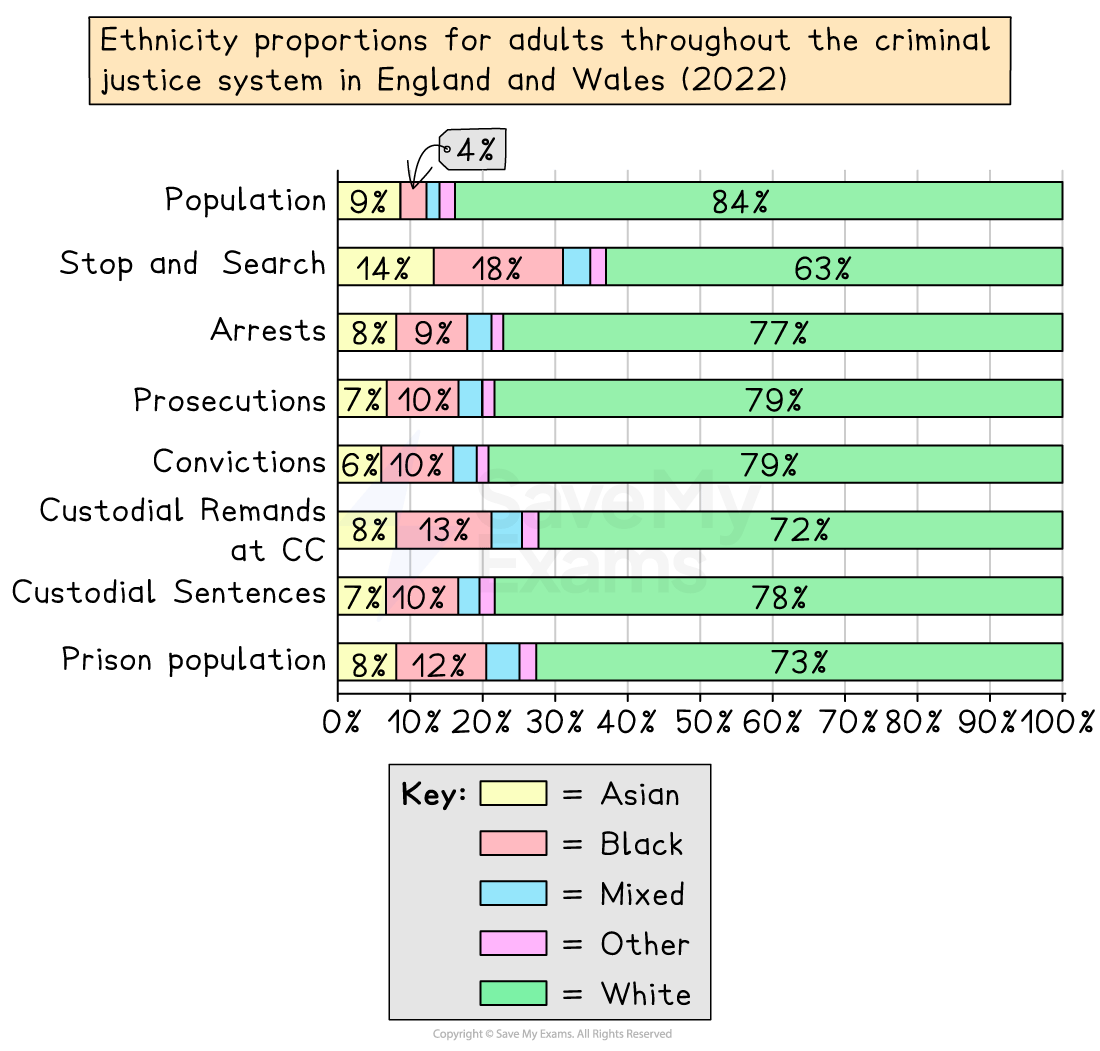The Relationship Between Ethnicity & Crime (AQA GCSE Sociology): Revision Note
Exam code: 8192
Official statistics on ethnicity & crime
Statistics from the Ministry of Justice (2024) show that some ethnic groups are over-represented in the prison population relative to their proportion in the general population
Black prisoners serve more of their original prison sentence (68% in 2022) when compared with white (59%) and Asian prisoners (58%)
In the year ending March 2023, there were 24.5 stop and searches for every 1,000 black people and 5.9 for every 1,000 white people (Home Office, 2024)

Victims of crime
Data from the CSEW (2014/2015) shows that the risk of being a victim of personal crime varies according to ethnicity
4% of white adults were victims of a personal crime once or more in the previous 12 months, compared to around 11% of adults of mixed heritage
The CSEW also shows variations in the proportion of people from different ethnic groups who see the CJS as fair
A higher proportion of adults that are Asian or Asian British are confident the CJS is fair compared to white adults
Explanations for the link between ethnicity & crime
There are several ways sociologists have explained the relationship between ethnicity and involvement in crime
Reason | Explanation |
|---|---|
Poverty | The statistics could reflect reality, as the reason that there are more black people in prison relative to their proportion in the general population could be because they commit more crimes than members of other ethnic groups. The reason for this may be due to unemployment, poverty and deprivation. |
Bias in the CJS and institutional racism | Alternatively, the statistics exaggerate the amount of crime committed by black people. It could be that there is bias within the CJS. Some sociologists argue that black people are more likely to be targeted, prosecuted, convicted and given larger sentences than people from other ethnic groups. This could be due to institutional racism. (The Macpherson Report in 1999 identified institutional racism within the Metropolitan Police). |
Examiner Tips and Tricks
Higher-level extended writing answers tend to discuss how a combination of factors such as social class, gender and age can explain criminal and deviant behaviour.
Merton and Cohen's work (on social class) is especially relevant here because some ethnic minorities may commit crimes, as they are more likely to be concentrated in the lower social classes.
Alternatively, Becker's work can be used to explain the link between ethnicity and crime, as the labelling of black people can explain why they are over-represented in the CJS.

Unlock more, it's free!
Did this page help you?